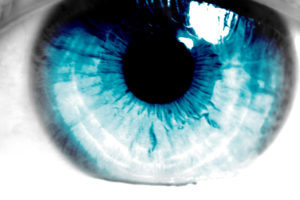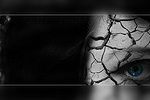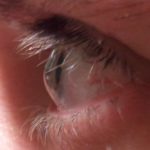What is OrthoKeratology

OrthoKeratology is an FDA approved procedure that improves a person’s vision without surgery, glasses, or daily contact lenses. Many patients refer to it as “braces for your eyes”. Summer provides a great opportunity to start an orthokeratology program for your child. Imagine enjoying sports like swimming, gymnastics, and dance without the use of contact lenses or glasses. The nearsighted prevention benefits provide a tremendous added bonus to a summer orthokeratology program.
OrthoKeratology Prevents the Progression of Nearsightedness
It’s great being able to enjoy life and sports in general without contact lenses or glasses; however, a significant benefit of orthokeratology is that it has been clinically proven to slow the progression of nearsightedness in children. Numerous studies have shown the rate of myopia reduction is between 50% to 90%. A landmark study on the rate of myopia in the US was completed in 1972. This study found that 25% of the US population was myopic (nearsighted). A follow up study completed 41 years later found the rate of myopia in the United States had increased to 41% of the population. Complete analysis of these two studies can be found here in this earlier TheEyeDocBlog.com entry. High myopia increases a person’s risk for many conditions such as glaucoma and retinal detachment. By decreasing a child’s amount of nearsightedness we are decreasing their risk for these, and many other, conditions.
FDA Approved Technology
Overnight orthokeratology was approved by the FDA in 2002. This was game changer for orthokeratologists. Prior to overnight orthokeratology’s FDA approval, patients would wear their retainers every other day, which was not ideal. Now patients wear their lenses at night, removing them upon waking and enjoy good vision all day, every day. We are often asked if the vision correction lasts more than one day and yes it does. If a patient forgets to wear their lenses one night their vision is still good the next day. Skipping a day of wearing your vision retainers may not result in a second day of 20/20 vision, more likely 20/25 or 20/30; however, very good, functional vision is still maintained. It takes days and most often weeks for the vision to return to the pre-treatment level.
What Do Patients Say?
The first thing we hear from patients after they have undergone OrthoK is that they can’t believe it works. “My daughter put her lenses in when she went to bed, she took them out when she woke up and says she can see fine” is a common theme. Another common topic is “why haven’t I heard about this before” and there are many reasons for this.
Why Haven’t You Heard About OrthoKeratology or Gentle Vision Shaping Before?
Quite simply, there are well under 1000 active orthokeratologists in the United States. With orthokeratology experience matters and there is a significant learning curve in becoming an orthokeratologist. New optometrists and ophthalmologists receive very limited orthokeratology training in school. Dr. Richard Driscoll has been an active orthokeratologist since 1999, helping countless patients achieve good vision without the use of daily contact lenses, surgery, or glasses.
How Does Orthokeratology Work?
Adult patients, kids, and parents alike express amazement at how we can alter or mold the shape of their corneas with a contact lens, resulting in clear vision during the day without the need for glasses. It’s not magic, the science is very well established and FDA approved. We remold the cornea into a shape similar to what is done with LASIK. The difference is that Ortho-K achieves this without the use of a laser and it does not remove any tissue; therefore, it is reversible, and easily modifiable.
Who is a Good Candidate for Orthokeratology?
Here is a quick list of those patients that benefit from orthokeratology. A more complete list of what makes a good orthokeratology candidate can be found on the OrthoKDoctor.com Website.
- The moderately nearsighted
- Children
- Adults
- Children that have experienced a sharp increase in nearsightedness
- Patients afraid to have elective surgery on their eyes
- Athletes
- Patients denied refractive surgery due to occupation
- People with a fear of surgery
What are the Benefits of OrthoKeratology?
- Safely improves your vision, usually to 20/20
- FDA approved for children and adults in 2002
- Greatly slows the progression of nearsightedness in children (up to 90%)
- Safer than refractive surgery
- It’s reversible
- Works while you sleep
- Great solution for patients with dry eyes
- Good for patients that can’t wear traditional daily contact lenses
- Allows you to see clearly all day – some patients experience more than 1 day of clear vision after 1 night of wear
- Proven technology
How do I Find More Information?
Check out the video below and see what patients are saying about Orthokeratology at Total Eye Care. If you want to know more about Orthokeratology and the Gentle Vision Shaping System at Total Eye Care call our Colleyville office for a free consultation 817.416.0333, Schedule a free OrthoK Consult online or visit www.OrthoKDoctor.com


 Pink eye is a descriptive term indicating that the eye is inflamed for some reason. Not all pink eyes are infected or contagious. “Pink” eye is usually caused by a virus (often quite contagious), allergies, or bacteria. The most common cause of pink eye is a viral infection or allergies. Patients with pink eye should not wear contact lenses.
Pink eye is a descriptive term indicating that the eye is inflamed for some reason. Not all pink eyes are infected or contagious. “Pink” eye is usually caused by a virus (often quite contagious), allergies, or bacteria. The most common cause of pink eye is a viral infection or allergies. Patients with pink eye should not wear contact lenses. 









